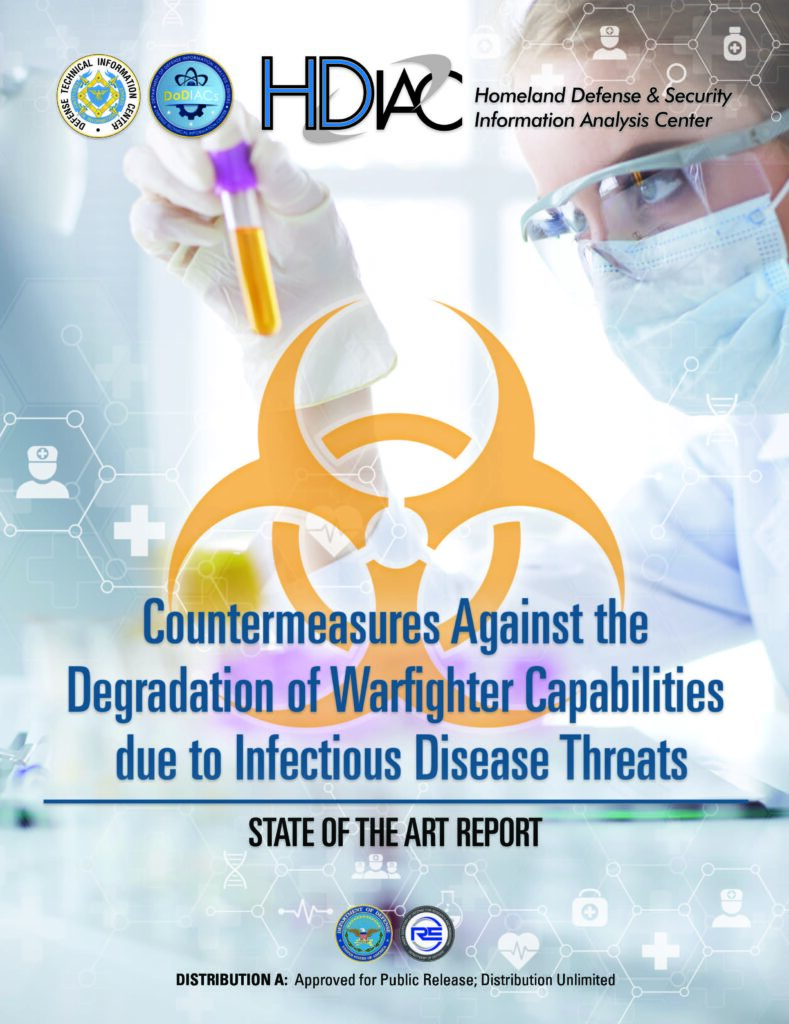an email newsletter released every month highlighting the latest articles, events, technical inquiries, and voices from the community
Countermeasures Against the Degradation of Warfighter Capabilities Due to Infectious Disease Threats

Posted: April 16, 2020
The Homeland Defense and Security Information Analysis Center (HDIAC) develops regular state of the art reports in order to provide a compendium of scientific/technical articles that summarize the most current state of research in topic areas of importance to the Department of Defense. These state of the art reports are a means of satisfying user needs for authoritative information directly applicable to their ongoing work. Infectious disease is a subset of the HDIAC medical technical focus area and was chosen due to its historical and ongoing impact on military operations; as of the date of this publication, the world is consumed with the ramifications of infectious disease in light of the 2019 Novel Coronavirus (COVID-19) pandemic, clearly demonstrating the importance of this topic.
Infectious diseases are disorders caused by pathogenic microorganisms such as bacteria, viruses, fungi, or parasites that can be passed by human-to-human contact, by insects or other animals, or by contaminated surfaces, food, or water. By its very nature, warfare lends itself to the spread of such disease, and contagions have had an impact on every conflict. During the Napoleonic wars, eight times more soldiers in the British Army died from disease than from wounds sustained in battle, and Napoleon turned back during a Mediterranean campaign due to plague; in the U.S. Civil War, fully two-thirds of the 650,000 casualties were due to infectious disease. As will be discussed in the following pages, the very conditions anticipated in combat – operating in close quarters in spartan conditions, deployments to remote areas, exposure to unknown pathogens, the rigors and wounds associated with combat, and the potential for encountering weaponized agents – are known to be precursors to the spread of diseases that can and have decimated combat readiness.
That said, improved understanding of the causes of these diseases has led to improved preventative measures over time, leading to decreases in non-combat losses. Accounting for the potential of infectious diseases during peacetime training, contingency planning, and combat operations can mitigate the effects of disease and lead to increased combat readiness through a reduction in noncombat casualties. The purpose of this report is to provide the medical practitioner, the medical planner, and the commander with knowledge that will aid in balancing the myriad competing demands in the most trying of human endeavors.
This report explores the impact of infectious disease on military personnel, providing both an historical and ongoing risk profile of the various infectious diseases that put the warfighter at risk. It includes a look at the historical impact of infectious diseases on past conflicts before going on to detail current and future infectious disease risks, their impact on the warfighter, and challenges in prevention or treatment, and concludes with a quick-look summary of state of the art developments and recommended countermeasures to aid leaders during training and planning.
Focus Areas
Stay informed when a new SOAR is released
Subscribe to our upcoming state-of-the-art reports

